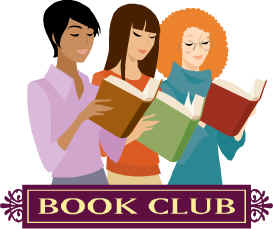The Lemon Tree: An Arab, a Jew, and
the Heart of the Middle East by Sandy
Tolan focuses on one small stone house in
Ramla. Built
in 1936 by an Arab family but acquired by a
Jewish family after the Israelis captured the
city in 1948, this simple stone house has
anchored for decades the hopes of both its
displaced former owners and its new Jewish
occupants. Tolan chronicles the unlikely
chain of events that in 1967 brought a
long-dispossessed Palestinian son to the
threshold of his former home, where he
unexpectedly finds himself being welcomed by
the daughter of Bulgarian Jewish immigrants.
Though that visit exposes bitterly opposed
interpretations of the past, it opens a real,
albeit painful, dialogue about possibilities
for the future.
The contested stone house eventually
becomes into a kindergarten for Arab children
and a center for Jewish-Arab coexistence.
Having produced hundreds
of documentaries and features for NPR, Sandy
Tolan has reported from more than 30
countries, mostly in Latin America, the
Middle East, the Balkans and
Eastern Europe
. He is the author of two books.
Interviews with the author may be
downloaded from http://sandytolan.com/the-lemon-tree/interviews
Discussion
Questions:
- The
book opens with the journey of Bashir and
his cousins on a bus to their childhood
homes in al-Ramla.
How would you have felt if you
were Bashir, approaching the old home,
and pressing the bell?
- The
Arab-Israeli war of 1948 is known as the
“War of Independence” to Israelis,
and the “Nakba,”
or “Catastrophe,” to Palestinians.
Taking the point of view of Bashir,
tell the group how you experienced the
first several months of 1948. Now, do the
same with Yitzhaki.
- Why
was the U.N. Resolution that promised the
“right of return” such a singular
focus for Palestinians?
If it were you who had been
displaced, would you also demand to
return home, or would you, at some point,
decide it would be easier to live in
peace, if also in exile?
- Dalia
is described as carrying “an
extraordinary legacy” with her to
Israel
in 1948. What was that legacy?
- How
much of a role do you think the
Holocaust, and reaction to it through the
crafting of a Sabra identity, played in
the formation of
Israel
’s national psyche?
Consider why Dalia describes
herself as growing up in the shadow of
the Holocaust even though her family
escaped. At the same time, consider that
Dalia grew up among a new community of
Jews who were trying to re-form their
identity.
- The
emerging trust between Dalia and Bashir
was shattered in February, 1969, when a
bomb exploded in a
Jerusalem
supermarket, killing three people.
Describe Dalia’s state of mind
during this time.
- After
Dalia’s parents died and Bashir is
released from prison, why did Dalia get
in touch with Bashir?
- At
their meeting in the home of a Christian
minister in Ramallah, Dalia offered to
share the home in Ramla. What is the
meaning of this gesture and the meaning
of the agreement Dalia and Bashir forged
that day?
- In
1988, near the beginning of the intifada,
Bashir was deported to
Lebanon
. On the eve of his deportation, Dalia
wrote an open letter to Bashir that was
published in the Jerusalem Post. Weeks
later, Bashir replied. What is your
reaction to both letters?
- Bashir
and Dalia finally meet again, in the
midst of rising violence and political
tensions, in Ramallah in 2004. They find
that their political differences are as
great as ever, but that their personal
relations are as warm as ever. How does
one explain that?
- Near
the end of the book, on page 262, Dalia
says, “Our enemy is the only partner we
have.” What does she mean by that?
Questions adapted from:
Booklist and http://sandytolan.com

